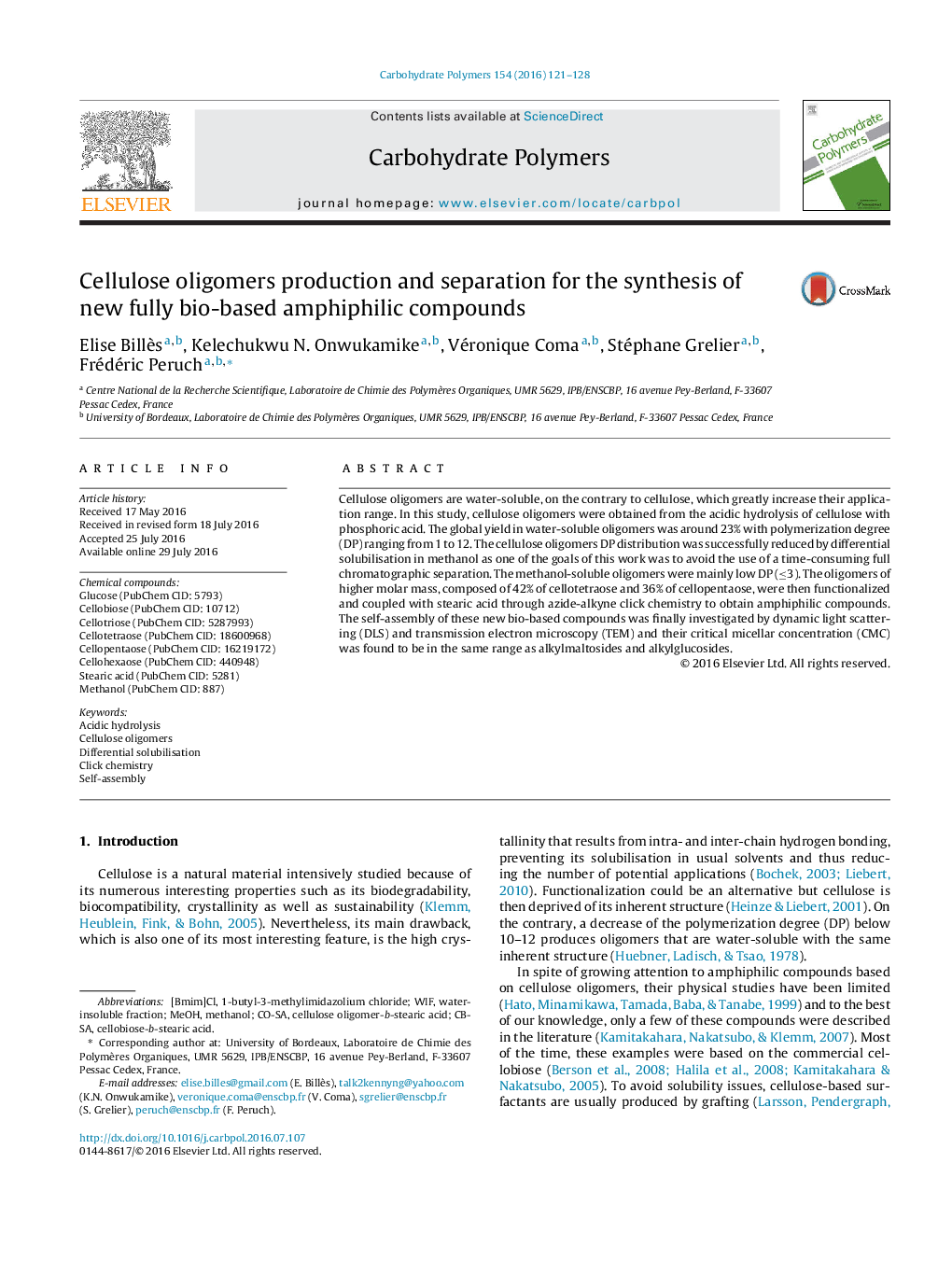| Article ID | Journal | Published Year | Pages | File Type |
|---|---|---|---|---|
| 1384699 | Carbohydrate Polymers | 2016 | 8 Pages |
•Cellulose oligomers were obtained by acidic hydrolysis and were characterized.•Their dispersity was successfully decreased by differential solubilisation.•Cellulose oligomers were coupled with a fatty acid using click chemistry.•The self-assembly of these new fully bio-based amphiphilic compounds was studied.
Cellulose oligomers are water-soluble, on the contrary to cellulose, which greatly increase their application range. In this study, cellulose oligomers were obtained from the acidic hydrolysis of cellulose with phosphoric acid. The global yield in water-soluble oligomers was around 23% with polymerization degree (DP) ranging from 1 to 12. The cellulose oligomers DP distribution was successfully reduced by differential solubilisation in methanol as one of the goals of this work was to avoid the use of a time-consuming full chromatographic separation. The methanol-soluble oligomers were mainly low DP (≤3). The oligomers of higher molar mass, composed of 42% of cellotetraose and 36% of cellopentaose, were then functionalized and coupled with stearic acid through azide-alkyne click chemistry to obtain amphiphilic compounds. The self-assembly of these new bio-based compounds was finally investigated by dynamic light scattering (DLS) and transmission electron microscopy (TEM) and their critical micellar concentration (CMC) was found to be in the same range as alkylmaltosides and alkylglucosides.
